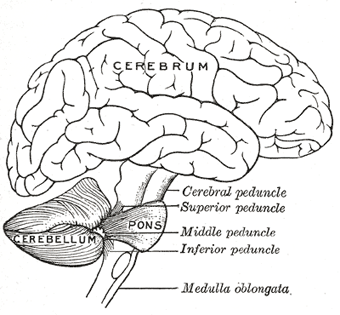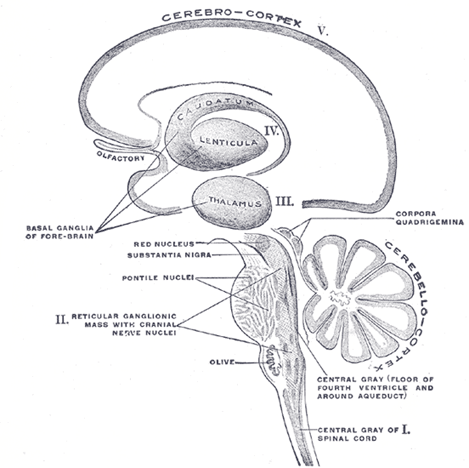| General Considerations and Divisions.—The brain, is contained within the cranium, and constitutes the upper, greatly expanded part of the central nervous system. In its early embryonic condition it consists of three hollow vesicles, termed the hind-brain or rhombencephalon, the mid-brain or mesencephalon, and the fore-brain or prosencephalon; and the parts derived from each of these can be recognized in the adult (Fig. 677). Thus in the process of development the wall of the hind-brain undergoes modification to form the medulla oblongata, the pons, and cerebellum, while its cavity is expanded to form the fourth ventricle. The mid-brain forms only a small part of the adult brain; its cavity becomes the cerebral aqueduct (aqueduct of Sylvius), which serves as a tubular communication between the third and fourth ventricles; while its walls are thickened to form the corpora quadrigemina and cerebral peduncles. The fore-brain undergoes great modification: its anterior part or telencephalon expands laterally in the form of two hollow vesicles, the cavities of which become the lateral ventricles, while the surrounding walls form the cerebral hemispheres and their commissures; the cavity of the posterior part or diencephalon forms the greater part of the third ventricle, and from its walls are developed most of the structures which bound that cavity. |


